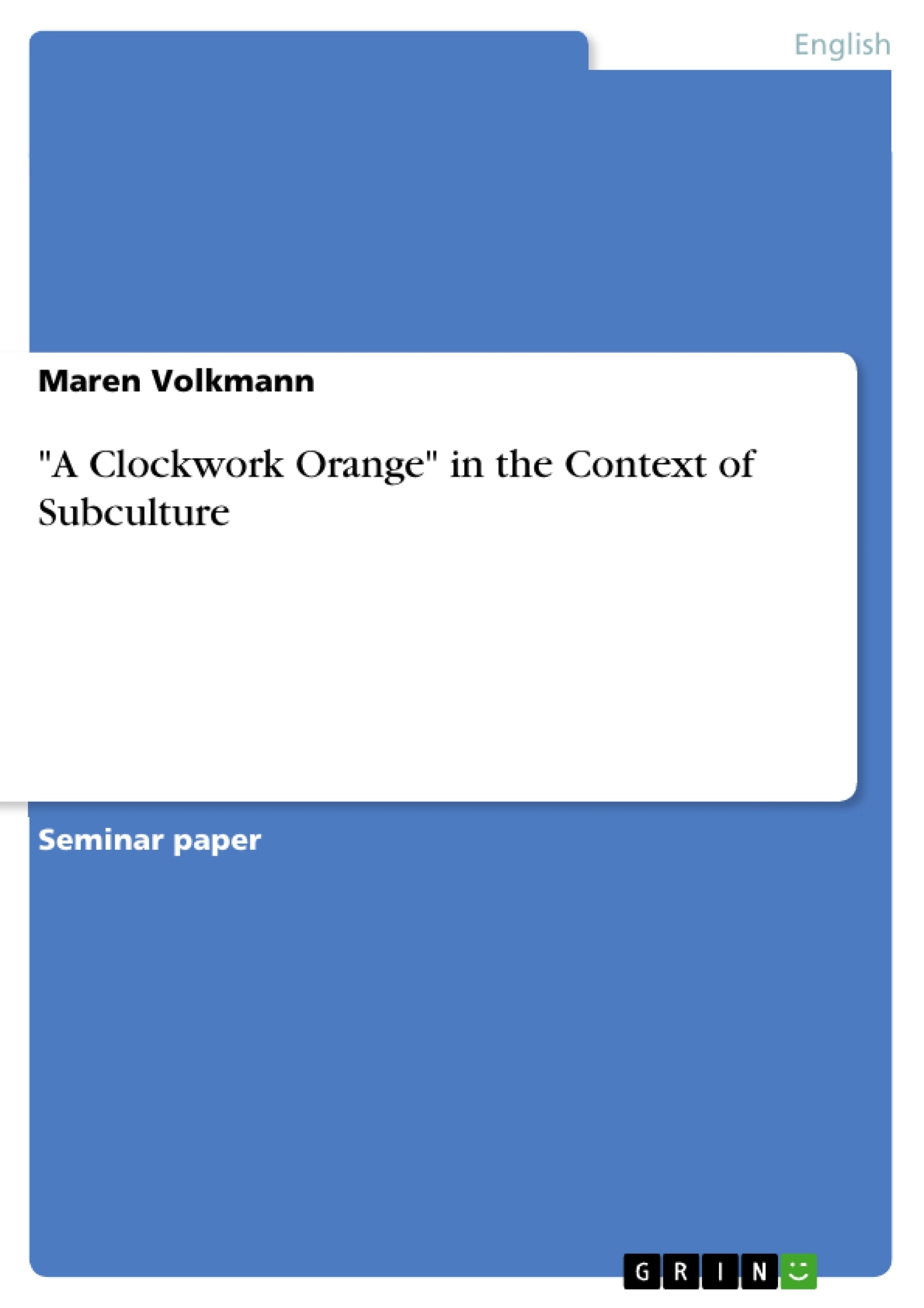In 1974 - just two years after it had opened - the movie “A Clockwork Orange” by Stanley Kubrick was banned from Bristish screens. It was Kubrick himself who decided to withdraw the film from distribution in the UK. Since Kubrick received death threats and threatening phone calls he hoped that the controversary would subside with the fading of memory. The film had been blamed for several violent acts and Kubrick and Anthony Burgess, the writer of the novel, were made responsible for them. In fact, the film caused a moral panic because of its violence. However, it seems interesting to me who is behind all this violence. I want to analyse how Alex and his droogs define themselves. Are they rebels without a cause and if not, what are they rebelling against? I will try to take a look at the book and the film in context of subculture: how did subculture influence the works of Burgess and Kubrick, how is subculture presented in their works and how did they influence subculture afterwards?
Table of Contents
- Introduction
- Subculture before ACO
- Short overview: Subcultures in the 1960's
- Teddy Boys
- Mods
- Rockers
- Inspiration for the novel
- Short overview: Subcultures in the 1960's
- Subculture in novel and film
- Setting
- The droogs
- Dress
- Language
- Drugs
- Violence
- Music
- Subculture after ACO
- Affection on youth
- Punk subculture
- Skinheads
- Conclusion
Objectives and Key Themes
This term paper examines the role of subculture in Anthony Burgess's novel "A Clockwork Orange" and Stanley Kubrick's subsequent film adaptation. The paper aims to analyze how subculture influences the characters, their actions, and the overall narrative. The author explores the social and cultural context of subcultures in post-war Britain, examining how they both shaped and were shaped by the works of Burgess and Kubrick.
- The influence of subculture on "A Clockwork Orange"
- The depiction of subculture in the novel and film
- The impact of "A Clockwork Orange" on subsequent subcultures
- The role of violence and rebellion in subcultural identity
- The relationship between subculture and social change
Chapter Summaries
The paper begins by introducing the controversy surrounding "A Clockwork Orange" and its banning from British screens in 1974. The author delves into the origins of the novel, focusing on Burgess's personal experiences and the social and cultural context of 1960s Britain. The paper examines the key subcultures of the era, including the Teddy Boys, Mods, and Rockers, highlighting their styles, values, and influences.
The paper then explores the portrayal of subculture in "A Clockwork Orange", examining the setting, the protagonist's gang (the droogs), and their distinctive dress, language, and behavior. The author analyzes the role of violence and drugs in the subculture depicted in the novel and film.
Finally, the paper examines the impact of "A Clockwork Orange" on subsequent subcultures, particularly the emergence of punk and skinhead movements. The author explores how the novel and film contributed to the understanding and representation of youth rebellion and social unrest.
Keywords
The main keywords and focus topics of the term paper include subculture, "A Clockwork Orange", Anthony Burgess, Stanley Kubrick, youth rebellion, social change, post-war Britain, Teddy Boys, Mods, Rockers, punk, skinheads, violence, and language. The paper examines how these themes and concepts intersect and shape the social and cultural landscape of the era.
- Quote paper
- Maren Volkmann (Author), 2003, "A Clockwork Orange" in the Context of Subculture, Munich, GRIN Verlag, https://www.grin.com/document/62218



